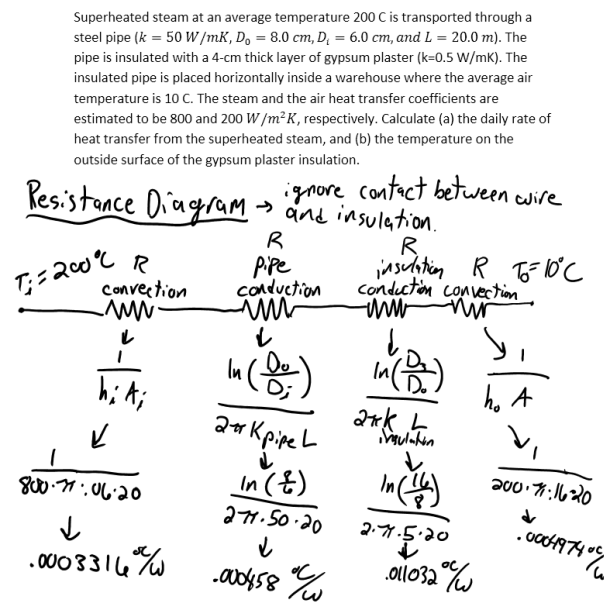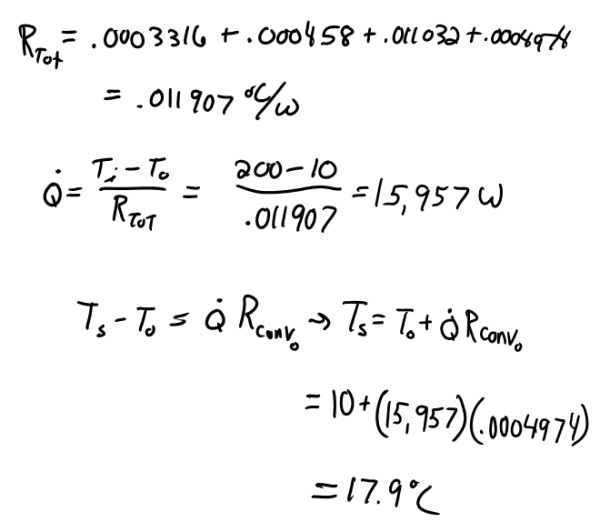Superheated steam at an average temperature 200 C is transported through a steel pipe (k=50 W/mK, D_0=8.0 cm,D_i=6.0 cm,and L=20.0 m). The pipe is insulated with a 4-cm thick layer of gypsum plaster (k=0.5 W/mK). The insulated pipe is placed horizontally inside a warehouse where the average air temperature is 10 C. The steam and the air heat transfer coefficients are estimated to be 800 and 200 W/m^2 K, respectively. Calculate (a) the daily rate of heat transfer from the superheated steam, and (b) the temperature on the outside surface of the gypsum plaster insulation.


Superheated steam at an average temperature 200 C is transported through a steel pipe (k=50 W/mK, D_0=8.0 cm,D_i=6.0 cm,and L=20.0 m). The pipe is insulated with a 4-cm thick layer of gypsum plaster (k=0.5 W/mK). The insulated pipe is placed horizontally inside a warehouse where the average air temperature is 10 C. The steam and the air heat transfer coefficients are estimated to be 800 and 200 W/m^2 K, respectively. Calculate (a) the daily rate of heat transfer from the superheated steam, and (b) the temperature on the outside surface of the gypsum plaster insulation.

